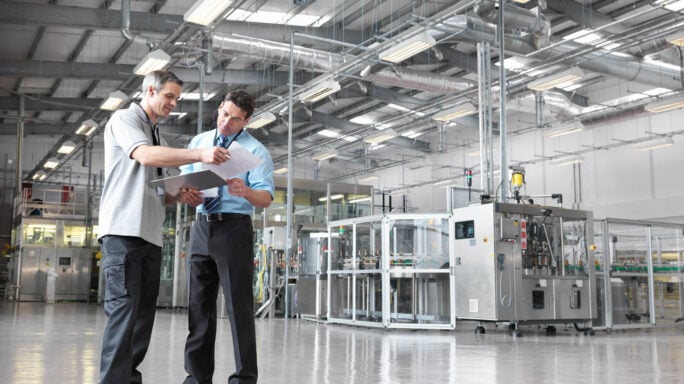Strategy, Legal & Operations
Is ERP the key to post-COVID business success?
COVID changed the world. Uncertainty persists, with many countries still under forms of lockdown. What does this mean for ERP?

COVID changed the world. Uncertainty persists, with many countries heading back into forms of lockdown. Our lives and the economy will look very different once the world finally reopens, affecting the way we work, our core business processes, and day-to-day activities.
Since the ’60s, businesses have used Enterprise Resource Planning (ERP) to align their business processes – from running accounting to procurement, to handling human resources, to managing regulations and compliance.
ERP is a way to bring data together – unlocking efficiencies to improve collaboration, increase teamwork, and build significant profits. ERP is called the nervous system in the digital body, connecting legacy systems to provide more value, for longer.
To draw critical insight, ERP is the clearest point of entry for new technologies like the Internet of Things (IoT), which adds new datasets to a manufacturing.
What does COVID mean for ERP, and can ERP be at the heart of agile working for post-coronavirus manufacturers?
As we explain below, there are six ways ERP can make a massive contribution to the resilience and reinvention of your post-coronavirus operation.
- ERP creates flexible supply chains
- Traceability leads to supply chain resilience
- ERP and social distancing at work
- Lean manufacturing leads the way to operational efficiencies
- Automation speeds up the delivery of goods to consumers
- The integration of ERP and tax is critical
How the pandemic exposed supply chain vulnerabilities
COVID-19 exposed many manufacturers to supply chain disruption. China was the first country to suffer significant disruption as a result of coronavirus, meaning travel restrictions, labor shortages, and logistical challenges impacted supply chains.
Coronavirus affected:
• Procurement of raw materials and finished products,
• Labor, with more people in quarantine,
• Sourcing, with travel restrictions making new business arrangements challenging, and
• Logistics, with disruption affecting capacity and availability at established hubs and supply networks.
6 ways ERP can help manufacturing processes post-COVID
1. ERP creates flexible supply chains
Flexible supply chains help manage challenges like these by using external data to improve demand and supply forecasting. Businesses should also consider expanding and broadening their supplier ecosystem.
Michael Larner, a principal analyst at ABI Research, says: “To mitigate supply chain risks, manufacturers should not only not source components from a single supplier but also, as COVID-19 has highlighted, shouldn’t source from suppliers in a single location.”
That complexity, and the need to orchestrate more suppliers feeding into a more unpredictable demand scenario, leads ABI Research to predict that manufacturers’ spending on ERP will increase to $14bn by 2024.
For many businesses, the time to build a digital supply chain and become a smart, Industry 4.0 manufacturer is now. With the cloud, you can take advantage of real-time visibility, which is a real asset when it comes to managing supply chains.
This helps businesses understand weather patterns (which may be affected more severely by climate change) and reasons for supplier issues and delays. You can feed into real-time decision making. And of course, supply chains benefit from increased efficiencies and less reliance on manual processes.
2. Traceability leads to supply chain resilience
If supply networks are one half of supply chain resilience, traceability is the other.
In the food and beverage industry, for instance, COVID pushed manufacturers to adopt technology that proves their food products are safe.
Even before the pandemic, the US Food and Drug Administration (FDA) made it clear that traceability was a real emphasis with the Food Safety Modernization Act. This act asks food and beverage manufacturers to employ new technologies to digitally trace products and suppliers, rather than continue with a reliance on paper.
As Cleantech reports: “Product traceability and provenance is a cornerstone of supply chain resilience. Tracking what happens to a product along each link of a supply chain is the first step to solving issues of product sustainability, non-compliance and risk.”
COVID accelerates interest in digital technologies as it becomes more difficult to perform traditional offline third-party food auditing and verification. With many consumers now eating at home rather than at restaurants, there’s an increased demand on manufacturers to provide safe food products directly to customers.
In general, despite the trend towards onshoring, few sectors will honestly be able to say that, in increasingly variable supply chains, they can trace every component of a product without digital assistance.
As ideas like independence of food supply and food miles become political hot topics (as well as consumer priorities), process manufacturers, in particular, will need ERP to keep provenance and traceability reporting under control.
3. ERP and social distancing at work
COVID has put remote working at the forefront of business processes and planning, with businesses not traditionally associated with remote working, such as manufacturing companies, being forced to put remote working and the relevant collaborative technology in place.
Next-generation cloud ERP is at the center of workplace reinvention, allowing much of the work that previously had to be done on-site to now be performed remotely.
ERP gives remote staff access to the information they need, no matter where they are. It allows workers not on the factory floor to operate remotely, with all the information they need to make decisions in real-time.
On the floor, it frees up workers to operate flexibly – and therefore distanced – using handheld scanners to process materials. ERP allows different manufacturing departments to communicate because they are using one version of the truth, increasing productivity, collaboration, and allowing the real-time use of data.
As the backbone of an emerging IoT environment, ERP can also marshal sensors to spot production problems before they become shutdown issues, and also reduce the need for on-site personnel by triaging those problems early enough (often fast enough to resolve without a service call).
4. Lean manufacturing leads the way to operational efficiencies
Manufacturers around the world must work in a world which has thoroughly changed due to coronavirus. Businesses that were inefficient and unproductive before due to a lack of modern technology will struggle – post-coronavirus they will struggle even more.
Nobody argues that we are now in a cost-cutting era. Businesses are focusing on core activities and trimming the fat from operations to secure as long a financial runway as possible.
For manufacturers, the playbook has been written over many years. Lean processes reduce waste and minimize cost across the operation. If you’re looking to optimize:
- inventory holdings
- transport and distribution costs
- raw materials pricing and usage
- the time and motion involved in production processes
…or to obtain the data which will trim cost out of any number of other elements of manufacturing, ERP should be your starting point.
5. Automation speeds up the delivery of goods to consumers
Post-COVID, increased visibility to make fast and more data-led decisions will be essential. Through automation available in modern ERP, you can use real-time reporting and analytical dashboards to continuously review your financial data, without lengthy time spent auditing and preparing the information.
And referring to robotics, Interact Analysis, the leading market researchers in the intelligent automation sector, reports: “Social-distancing measures are likely to fuel the demand for automation in retail warehouses.
“There is also the added factor that the use of robots and other automated equipment in these environments increases efficiency and speed of supply of goods to consumers.”
This is true across all types of automation, which may be as simple as software widgets to automate repetitive processes, through to artificial intelligence solutions that can digitize whole functions.
The assessment of value is correct, though: automation improves efficiency, productivity, flexibility, error reduction and workforce availability.
As we stand on the brink of significant advances in automation and its affordability, ERP is the backbone of deployment.
6. The integration of ERP and tax becomes more critical
Many businesses have had to rely on government support during lockdowns.
Deloitte reports: “The reality is that, since the start of this crisis, the tax function has become a cash generator for many enterprises; indeed, in some organisations, tax has been the only source of cash while operations remained closed.
“The pandemic also demonstrated the benefits of integrating the tax function into organization-wide ERP.
“To chart a path forward, leaders have needed tax to develop and articulate the tax implications of a range of different scenarios – and many tax functions have floundered to get timely access to the enterprise and tax data necessary to run those sophisticated scenarios.”
As we move towards a more interventionist era, where tax and governmental regimes increasingly impact on business, ERP will become ever more critical for CFOs.
In short, ERP is everywhere…
But don’t trust us – we’ll give the final word to economists, the Institute of Fiscal Studies:
“Enterprise resource planning software has a role to play in helping:
- Identify the slowdown as it begins, and model the impact it has on your business so we can start to take corrective measures
- Maximize revenue where we can, while reducing cost
- Make a business case for process improvements and investments to strengthen the business for the long term
- Communicate expediently with customers and suppliers to ensure demand and supply signals are received
- Identify the signs of impending recovery so you can begin to ramp up and get a product to market faster than your competitor
“Now is the time to leverage the project management capabilities of ERP to manage as intelligently and courageously as possible.”








An ERP system can be so beneficial for many companies however they are unaware of it or are cautious. As a marketing analyst for an SaaS company I will admit that it is worth implementing. Thanks for sharing this informative piece.